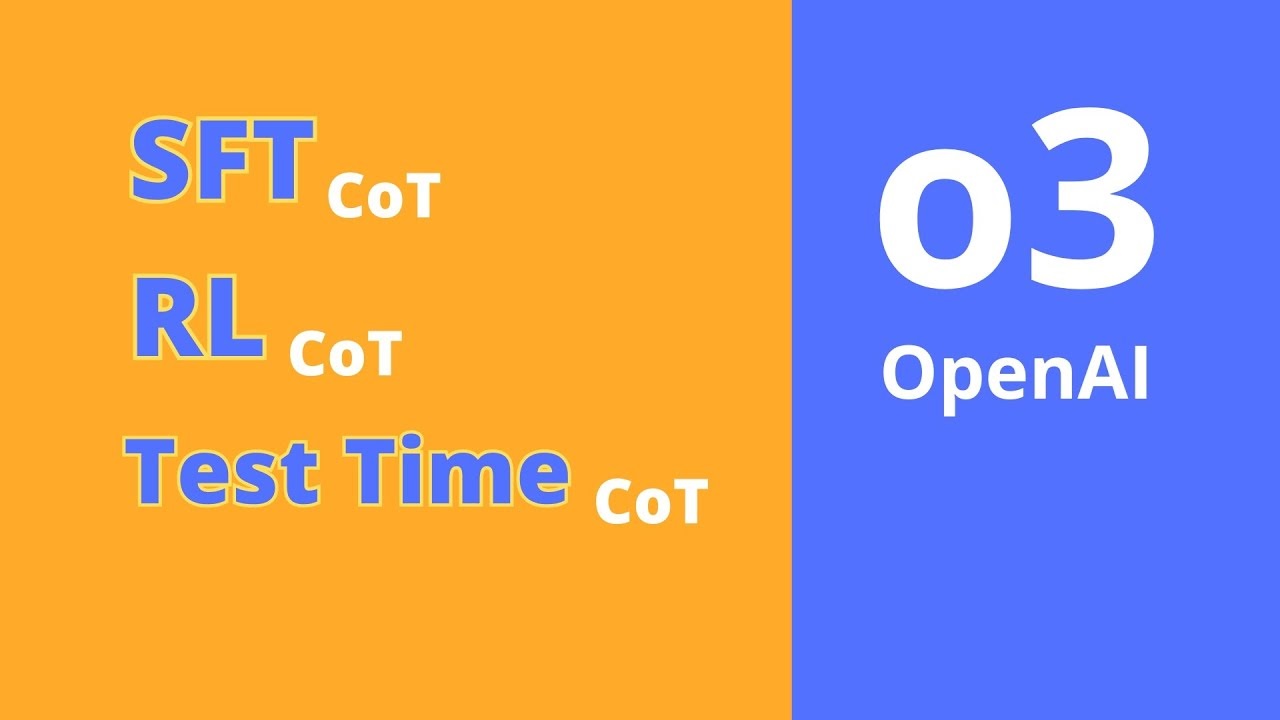
Introduction
The video discusses OpenAI’s o3 model training methodology, focusing on the transition from example-based learning to rule-based learning through deliberative alignment. The presenter aims to understand and potentially rebuild the o3 model using a 7B open-source model.
OpenAI’s o3 Inference Reasoning is a powerful technique for enhancing the reasoning capabilities of large language models (LLMs). To effectively leverage o3, building a high-quality training dataset is crucial. Here’s a breakdown of the key considerations and steps involved:
Understanding o3 Inference Reasoning:
- Chain-of-Thought Prompting: o3 relies on providing LLMs with a chain-of-thought (CoT) prompt, where the reasoning steps are explicitly outlined. This guides the model to break down complex problems into smaller, more manageable steps.
- Deliberative Alignment: o3 incorporates safety guidelines into the training process to ensure the model’s reasoning aligns with human values and avoids harmful outputs.
Building the Training Dataset:
- Data Collection:
- Gather Relevant Data: Collect a diverse dataset of text and code examples that align with your specific reasoning tasks. This could include:
- Scientific articles, textbooks, and research papers
- Mathematical problems and solutions
- Code repositories and documentation
- Legal documents and case studies
- News articles and reports
- Ensure Quality: Prioritize high-quality, accurate, and unbiased data sources.
- Gather Relevant Data: Collect a diverse dataset of text and code examples that align with your specific reasoning tasks. This could include:
- Chain-of-Thought Annotation:
- Human Annotation: Employ human annotators to manually create CoT examples for your dataset. This involves:
- Breaking down problems: Decomposing complex problems into a series of smaller, logical steps.
- Formulating reasoning chains: Expressing the reasoning process in a clear and concise manner.
- Providing explanations: Explaining the rationale behind each step in the reasoning chain.
- Automated Generation: For large datasets, consider using automated methods to generate CoT examples. However, human oversight and validation are essential to maintain quality.
- Human Annotation: Employ human annotators to manually create CoT examples for your dataset. This involves:
- Incorporate Safety Guidelines:
- Define Safety Principles: Clearly articulate the safety principles and ethical considerations relevant to your reasoning tasks.
- Integrate Guidelines: Integrate these safety guidelines into the CoT prompts and annotations. This can involve:
- Explicitly stating safety constraints within the prompts.
- Providing examples of safe and unsafe reasoning patterns.
- Instructing annotators to consider safety implications during the annotation process.
- Data Preprocessing and Cleaning:
- Data Cleaning: Remove any irrelevant, noisy, or biased data.
- Data Formatting: Format the data consistently for efficient model training.
- Data Splitting: Split the dataset into training, validation, and test sets.
Example:
Let’s say you’re training an LLM for solving mathematical word problems. Your dataset might include:
- Data: A collection of word problems with their corresponding solutions.
- CoT Annotation:
- Problem: “A train leaves station A at 8:00 AM and travels at a speed of 60 mph. Another train leaves station B at 9:00 AM and travels in the opposite direction at a speed of 70 mph. If the distance between station A and station B is 500 miles, at what time do the two trains meet?”
- CoT:
- “Let’s calculate the distance traveled by the first train from 8:00 AM to 9:00 AM: 60 mph * 1 hour = 60 miles.”
- “Now, let’s calculate the combined speed of both trains: 60 mph + 70 mph = 130 mph.”
- “Let’s calculate the time it takes for the two trains to meet: 500 miles / 130 mph = 3.85 hours.”
- “Finally, let’s convert the time to hours and minutes: 3.85 hours = 3 hours and 51 minutes.”
- “Therefore, the two trains meet at 9:00 AM + 3 hours and 51 minutes = 12:51 PM.”
By following these steps and continuously refining your dataset, you can effectively train an LLM to perform o3 Inference Reasoning, leading to more accurate, reliable, and safe reasoning capabilities.
Video about o3 Inference Reasoning:
Key Sections
Two-Stage Training Process
- Supervised Fine-tuning (Process Supervision):
- Uses synthetic data generation with Chain of Thought reasoning
- Explicitly references and reasons over safety policies
- Training data consists of prompt-chain-reasoning-output triplets
- Includes quality filtering through reward models
- Reinforcement Learning (Outcome Supervision):
- Focuses on output quality rather than reasoning process
- Uses reward models to evaluate responses
- Employs PPO (Proximal Policy Optimization) for alignment
- Hidden chain-of-thought during evaluation
Limitations and Challenges
- Reasoning complexity limited by training data complexity
- System struggles with self-learning higher complexities
- Evaluation quality dependent on reward model capabilities
- Need for better exploration in reinforcement learning
Current Research Directions
- Berkeley’s work on information gain maximization
- Meta’s transition to concept models
- Exploration of diffusion-based models for higher complexity reasoning
- Self-refinement approaches for iterative improvement
Conclusion
While O3’s methodology offers significant advantages in synthetic data generation, generalization, and policy adaptability, it faces fundamental limitations in achieving higher reasoning complexities beyond its training data. The presenter suggests that current AI systems still lack the biological equivalent of building complex structures from simple patterns.
Key Takeaways
- Rule-based learning with explicit reasoning shows better results than implicit pattern learning
- Two-stage training process combines process and outcome supervision
- Quality filtering and reward models play crucial roles in training
- Current limitation: inability to exceed training data complexity
- Active research continues in exploring methods for achieving higher reasoning capabilities


